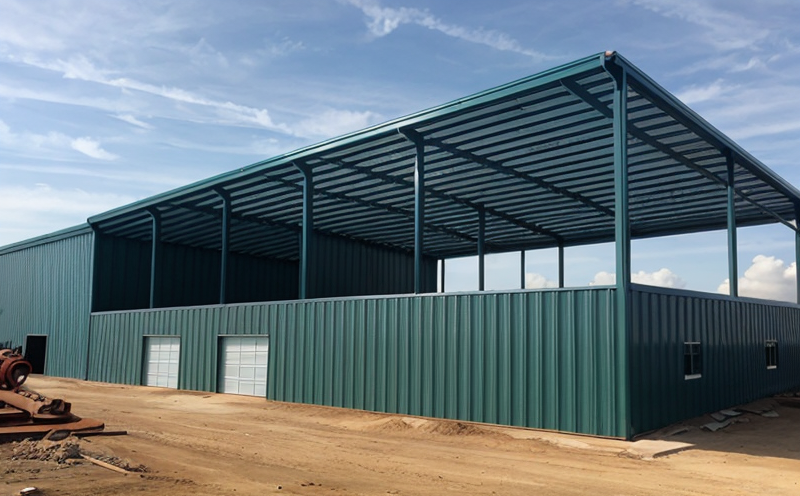MIL-STD-810H Low Pressure (Altitude) Environmental Testing for IoT Devices
The MIL-STD-810H standard, a cornerstone of environmental testing protocols, is widely recognized for its rigorous approach to ensuring the durability and reliability of military-grade equipment. For IoT devices, this standard is particularly crucial as it addresses the extreme conditions that these devices may encounter in real-world deployments.
Low-pressure or altitude testing, specifically, is designed to simulate the effects of high-altitude environments where atmospheric pressure decreases. This type of testing is essential for IoT devices intended for use in remote locations such as mountainous regions, aircraft, or even satellites. The purpose of this test is to verify that the device can withstand and function correctly under low-pressure conditions.
The testing protocol involves subjecting the device to a pressure chamber where the internal pressure is gradually reduced to simulate altitudes ranging from 80% sea level up to approximately 24,000 feet. This range corresponds to an atmospheric pressure of about 15 psi (pounds per square inch) at the highest altitude tested.
During testing, various environmental parameters are monitored including temperature and humidity levels that can vary widely in high-altitude environments. The device must be able to maintain its functionality through these challenging conditions without any operational failures or performance degradation. This is critical for ensuring that IoT devices remain reliable even when deployed in areas with varying atmospheric pressures.
The testing process involves several steps, each aimed at simulating the specific environmental stresses that a device might encounter. The first step is to prepare the test specimen by securely mounting it within the pressure chamber. Once mounted, the chamber is sealed and pressurized to simulate high-altitude conditions. Temperature and humidity controls are then adjusted to match the expected environmental conditions.
After a set period of time under these conditions, the pressure in the chamber is gradually reduced to simulate descent to lower altitudes. This phase allows for the assessment of how the device responds as it would during flight or transfer between different altitude levels. The test concludes with a final inspection and functional check to ensure that the device has not been adversely affected by the testing environment.
This MIL-STD-810H low-pressure (altitude) environmental test is essential for IoT devices because it ensures that these devices are robust enough to operate reliably in challenging environments. The test helps manufacturers identify any potential weaknesses or design flaws early on, allowing for necessary improvements before the product reaches its final market.
By adhering to MIL-STD-810H standards, companies can demonstrate a commitment to quality and reliability, which is crucial for gaining customer trust and compliance with international regulations. The test also helps in ensuring that IoT devices are capable of functioning effectively even when deployed in remote or extreme conditions.
Applied Standards
The MIL-STD-810H standard is widely recognized and utilized for environmental testing. This standard covers a broad range of test procedures, including low-pressure (altitude) testing, to ensure the durability and reliability of military-grade equipment.
Specifically, Section 5236 of MIL-STD-810H focuses on low-pressure or altitude testing. According to this section, the test aims to evaluate the device's performance under conditions where atmospheric pressure is significantly reduced. The standard provides detailed guidelines for setting up and conducting these tests, ensuring that they are conducted in a manner that accurately simulates real-world environmental stresses.
The MIL-STD-810H low-pressure testing protocol includes several key steps:
- Mounting the test specimen securely within the pressure chamber.
- Sealing and pressurizing the chamber to simulate high-altitude conditions.
- Adjusting temperature and humidity levels to match expected environmental conditions.
- Gradually reducing pressure in the chamber to simulate descent to lower altitudes.
Why Choose This Test
- Ensures compliance with MIL-STD-810H standards, a benchmark in environmental testing.
- Verifies the reliability and performance of IoT devices under challenging low-pressure conditions.
- Identifies potential weaknesses or design flaws early on, allowing for necessary improvements before market release.
- Demonstrates a commitment to quality and reliability, enhancing customer trust and satisfaction.
- Meets international regulations and standards, ensuring global compatibility of the device.
Use Cases and Application Examples
- IoT devices intended for use in remote locations such as mountainous regions or aircraft.
- Devices that need to function effectively even when deployed in areas with varying atmospheric pressures, including satellites.
- IoT products used by military personnel operating in high-altitude environments.
The MIL-STD-810H low-pressure test is particularly beneficial for IoT devices that are expected to operate at altitudes above 24,000 feet. These devices must be able to withstand the reduced atmospheric pressure and associated environmental conditions without any operational failures or performance degradation.
For instance, a smart sensor deployed on an aircraft might need to function reliably even when it is at high altitudes where atmospheric pressure is significantly lower than at sea level. By undergoing low-pressure testing according to MIL-STD-810H standards, manufacturers can ensure that their devices are robust enough to meet these stringent operational requirements.





